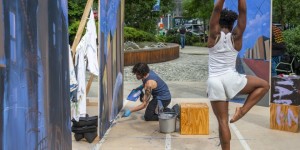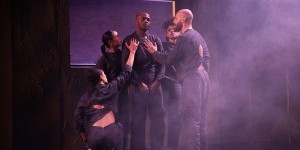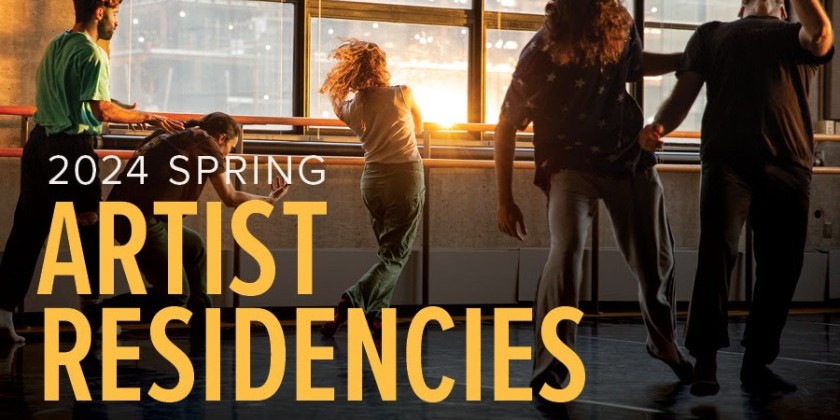IMPRESSIONS: Falling In Love with Bharat (India) During New York's Fall Dance Season - Part 1

Battery Dance Festival, Drive East Dance Festival and Duke University + Baryshnikov Arts Center Present the Brilliance of Indian Dance
Battery Dance Festival: Artistic Director, Jonathan Hollander
Drive East Festival: Presented by Navatman // Founders Sridhar Shanmugam and Sahasra Sambamoorthi
Duke University and Baryshnikov Arts Present: Bijayini Satpathy in Abhipsaa—A Seeking
Music and arrangements by Srinibas Satapathy and Bindhumalini Narayanaswami
Lighting by Sujay Saple and Itohan Edoloyi // Manager and Producer, Claudia Norman
Coordinator, Masoon Parmar // Master Tailor, Gudam Rasool
An extraordinary confluence of events brought Indian artists to the forefront of New York’s fall dance season this year. Beyond mere coincidence, simultaneous appearances by international stars Bijayini Satpathy and Malavika Sarukkai on the same weekend suggested a rare conjunction of astral bodies. Yet these glorious performances were not the only ones worth noting. Festivals highlighting the artistry of male dancers and Diaspora artists (some of whom may also be software engineers and microbiologists) offered a flood of choreography in styles both ancient and modern, pointing to the phenomenal growth of the Indian community in the USA.

This explosion of beauty began on India’s Independence Day (August 15), when the Battery Dance Festival presented an all-male lineup at Rockefeller Park, overlooking the Hudson River. Here the Rudrakshya Foundation, an Odissi troupe, performed Kali Krishna, an energetic meditation on spiritual light and darkness filled with contrasting sculptural groups stunningly brought to life by choreographer Guru Sri Bichitrananda Swain. At the same event, Kathak virtuoso Durgesh Gangani lost himself in the percussive rhythms of tabla drums and stamping feet, performing pieces handed down by his father and grandfather; while Kuchipudi dancer Amarnath Ghosh displayed his powerful physicality in Maragatha Manimaya. What a terrific evening!
Soon afterward, the annual Drive East Festival presented a Bharatanatyam soloist, expressive Rasika Kumar (Aug. 18), followed by the lively and nimble Aditi Bhagwat on a program blending Kathak with flamenco (Aug. 19). Both events were part of a remarkable lineup of music and dance at the Navatman studios, whose entrance was transformed into a shrine with sacred images, garlands of flowers, and colorful draperies, and where audience members were offered rose-water refreshments before the show.
.jpeg)
A second-generation Diaspora artist who directs the Abhinaya Dance Company in San Jose, CA, Rasika Kumar is a modern woman with a feminist perspective. Her two-part Shakti Unveiled uses the traditional language of Bharatanatyam to tell a tale of female empowerment. Awaking from slumber, Kumar’s gutsy nayika, or heroine, takes inspiration from Kali, a goddess of ferocious destruction, to cast off the shackles of patriarchy and repudiate sexual objectification, body shaming, and subservience to men. In Kumar’s work, the shyness of the heroine is no longer a virtue.
An adept of the classical Odissi school, Bijayini Satpathy flourished for many years as a performer without seeking an expressive outlet in choreography. Abhipsaa — a Seeking, which she presented September 21-22 at the Baryshnikov Arts Center, marked her choreographic debut. Though long in coming, there was nothing tentative about this piece, which was born ripe with creative imagery.
Abhipsaa is in four sections, which recast the elements of an Odissi program in an original manner. So, while the opening number, Vigraha, is not exactly an invocation, it portrays a young woman entering a temple where she makes offerings, raising her cupped hands heavenward and later placing (imaginary) flowers on an altar. The evening’s program then advances through episodes of pure and narrative dance to the final piece, Vimukthi, a meditation on death that, like the traditional moksha ending, offers a vision of spiritual liberation.

Along the way, Satpathy gives herself every opportunity to display her virtuosity. Vigraha opens ever so gently, the dancer’s figure coming to life with undulating movements of arm and hand, while her torso rocks softly from side to side. In a later segment, she contrasts male and female stereotypes: firing off imaginary arrows, kicking and stamping, her eyes ablaze, but then suddenly gracious and yielding. Her movements are wonderfully precise and quick, and her balances perfectly poised whether tilting forward on one leg, or lapsing effortlessly into the graceful tribhanga pose. Throughout Abhipsaa viewers can savor Satpathy’s deliciously rich and elastic movement quality, and admire her ability to conserve energy, so that she always has exactly what she needs and can create dynamic effects with sudden force or extreme delicacy.

In Vibhanga, Satpathy sinks to the floor with luxurious ease, her movement seamless. Then the lights come up and the tempo quickens. She catches the rhythm in her knees, in little stamps, and in the soft lilt of her shoulders, eventually galloping around the stage. In Virahi, Satpathy displays her dramatic skill (abhinaya). Here the dancer illustrates the grief of a lover whose beloved breaks free of her grasp and threatens to abandon her, leaving her hurt and bewildered, until the final moment of reconciliation, when she leans back and enfolds him in a blissful and fulfilling embrace.

The concluding number, Vimukthi, seems remarkably playful for a dance about death, until we understand that the soul is rejoicing at its escape from prison. This dance both begins and ends with sudden, startling movements — bold stamping and circling, and a sudden drop to the knees — as if to say that as much as we acknowledge the reality of death, its appearance always comes as a surprise. Brilliant!












